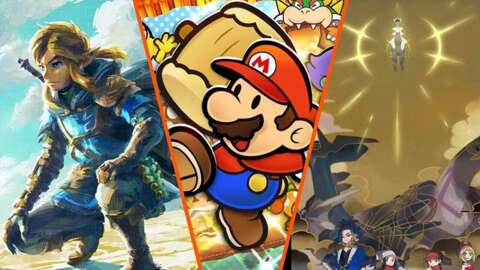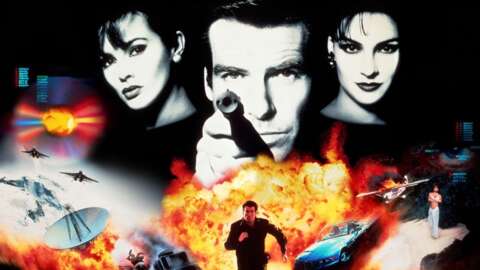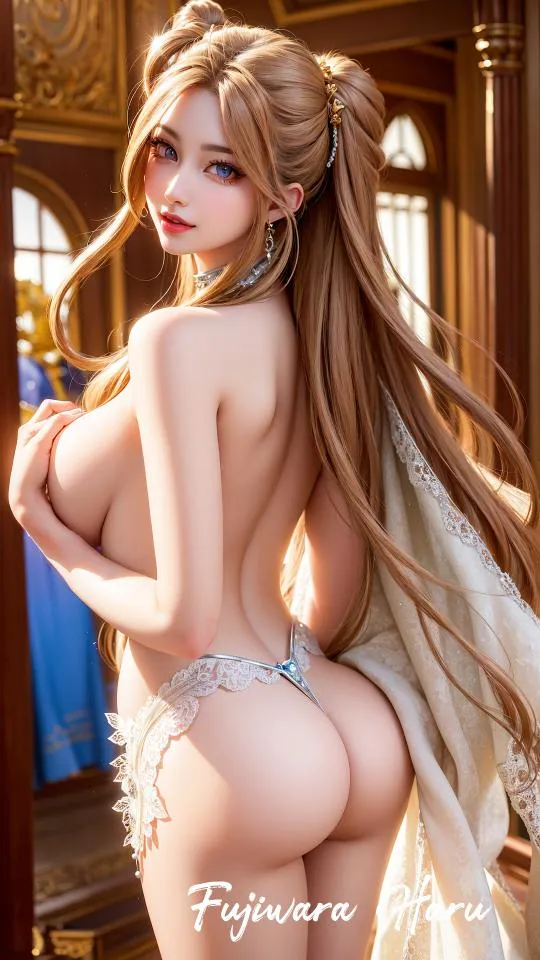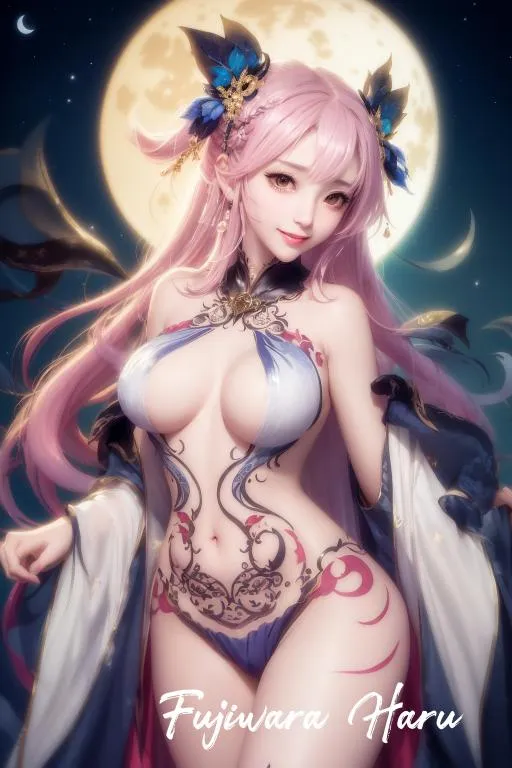X-Men #35 (legacy issue #700) has brought an end to the Krakoan age — but are readers ready to leave it behind? Even after five years spent on the mutant island, it feels like Marvel just scratched the surface of what was promised in the era’s kick-off, House of X/Powers of X (by Jonathan Hickman, Pepe Larraz, and RB Silva).
Fall of X satisfyingly concluded some of those promises, in particular the multiple lives of Moira MacTaggert (read IGN’s full breakdown of that ending here). The biggest shift of Krakoa wasn’t one particular story, though, it was the overall mood of the franchise. The X-Men weren’t settling for hiding in the shadows anymore, they were embracing evolution and ascending to be Earth’s next great nation.
Superhero comics have to remain in stasis to a degree, and this is especially frustrating for X-Men fans, who have to deal with their favorite characters forever remaining persecuted underdogs. The Krakoa era finally changed that. Now that readers have gotten a taste of readers of what the X-Men winning looks like, will they accept them going back to being underdogs? Moreover, can the new writers tell a convincing story of why the X-Men are accepting undone progress?
The next banner title of X-Men comics is appropriately titled From The Ashes. Overseen by veteran editor Tom Brevoort, 10 titles have been announced so far. Most notably, the legendary Gail Simone is writing “Uncanny X-Men,” featuring all my favorite X-Men: Rogue, Gambit, Wolverine, Nightcrawler, and Jubilee. Normally, I’d be ecstatic for this book, but coming off the last half-decade of X-Men comics, it feels small.
This post-Krakoa status quo is doing away with some of the era’s more innovative tenets. The X-Men are again divided into different teams across the U.S. instead of all living on Krakoa. The mutants had their time on top of the world, now these comics will explore them adjusting after they’ve climbed back down. Will X-fans stick along for that ride? Not necessarily.
How House of X/Powers of X was Radical
It’s the stuff of Marvel Comics legend now - the X-Men spent the 2010s in the dumps because Marvel didn’t have their movie rights. Marvel didn’t admit they were doing this, but some such as writer Rick Remender have been more blunt. Once Disney merged with 20th Century Fox, and Marvel Studios could make movies about them, the X-Men became a priority again. So, Marvel sought out the biggest gun they had: Hickman.
And boy did the X-Men comics need a shot in the arm. After Hickman and Esad Ribic’s 2015 event Secret Wars, Marvel tried to give the Inhumans the mutants’ place in the spotlight. The 2017 ResurrXion relaunch resulted in more X-Men books, and a couple bright spots (Tom Taylor and Mahmud Asrar’s X-Men: Red is well-liked and Rogue/Gambit’s wedding was long overdue). But, overall X-Comics still weren’t setting the world on fire like the Phoenix.
Hickman’s pitch was to both hook new readers and keep old fans interested. Krakoa appealed to new fans because of the fresh, unusual status quo, while offering old X-Men fans a chance to see their favorite characters finally get the utopia they deserved after so much hardship. The result gave the setting new depth and broke old conventions.
Mutants have always been a metaphor for oppressed minority groups, but Hickman made strides in making them feel like a people, giving them a culture, a language, and rituals that were only theirs. Death is never permanent in Marvel Comics, and Hickman has argued on the Off Panel podcast that this rotating door disinterests readers and makes creators’ jobs harder. So, “House of X/Powers of X” did away with the song and dance of it; death and resurrection were institutionalized on Krakoa with a complex process of cloning and psychic back-ups. The Scott/Jean/Logan love triangle long associated with X-Men? Hickman cut that knot too and made them a throuple.
Superhero comics have a fundamental divide: heroes and villains. Characters can jump across this line and back again, but the world remains sorted into good and evil. House of X/Powers of X blew this up too; if Krakoa was a mutant homeland, then it must be for all mutants. The readers, and the characters, had to evolve their thinking away from a Manichaean divide. In House of X #1, Mystique, Toad, and Sabretooth are staging a robbery and then the Fantastic Four show up to stop them. Cyclops arrives on the scene to help — but the mutant “villains,” not the FF.
House of X #5 climaxes with mutant villains arriving on Krakoa and by the series’ end, Apocalypse and Mister Sinister are serving on the same Quiet Council with Jean Grey and Storm. Chris Claremont rethought Magneto as less a conquering super-villain and more an ideologue who had a different dream from Professor X; Hickman asked readers to reconsider other mutant supervillains like Apocalypse in the same light.
To the extent Hickman’s work on X-Men is divisive, those splits are less over quality and more so over whether Krakoa was a positive thing in-universe — and I’d even argue that’s good too. A story that doesn’t give easy answers is a deeper one.
Krakoa Grew Beyond Jonathan Hickman
Hickman left X-Men in 2021; his last book was mini-series Inferno (art by Valerio Schiti), which saw Moira exposed and outed as Krakoa’s mastermind but still left the door open for further Krakoan tales.
I’m of two minds about Hickman not seeing his X-Men plans through. On one hand, the climax that we got in Fall of X is pretty uninspired. Anti-mutant organization Orchis topples Krakoa in yet another mutant massacre, but then the main X-Men regroup and win the day. Fall of House of X ends with all the X-Men’s heavy hitters (Storm, Cyclops, Magneto, etc.) wailing on super-Sentinel Nimrod and overwhelming him with their combined might; it’s an ending you’ve seen in many superhero comics and movies.
On the other hand, it wasn’t only Hickman’s story. Krakoa-set X-Men comics were collaborative from the beginning and made with a television-style writers’ room. The “Dawn of X” branding, where the first six regular Krakoa X-Men titles were launched, sold that this wasn’t just a new chapter by one creative team. It was a whole new playground for all creators to explore. Nation-building is a multi-faceted process.
“Dawn of X” and its subsequent phases produced books about mutant politics (Immortal X-Men, aka IGN’s top comic of 2022), mutant detectives (X-Factor), mutant corporations (Marauders, X-Corp, etc.), mutant fashion (the annual Hellfire Gala events), and more while still finding room for old-fashioned superhero slugfests (the X of Swords crossover event).
A mutant society would use their powers as public utilities; Gerry Duggan and Larraz’s Planet-Size X-Men takes that to the next level where the X-Men terraform Mars into a second mutant world, Arrako. This is, to me, the most audacious moment of the Krakoa era — Mars is a real place but out of our reach, and colonizing it has been a pipe dream. Mutants doing what humans couldn’t cements Krakoa as a world-disruptor in a more tangible way and it makes the Marvel Universe feel like a full-on sci-fi world rather than a close-enough reflection of our reality.
Hickman explained to Entertainment Weekly in 2021 that he saw Krakoa as only Act One of a three-part X-Men story. His decision to leave was cemented when, during a writers’ meeting, he pushed to move his plans forward and “To a man, everyone wanted to stay in the first act.” Hickman’s new setting was so vast, and his collaborative approach to shepherding the X-Men so successful, that the results had eclipsed his ambitions.
The Unrealized Potential of Krakoa
One of my favorite issues of Krakoa is X-Men #4 (written by Hickman, drawn by Leinil Francis Yu), when Xavier, Magneto, and Apocalypse go to the Davos World Economic Forum representing Krakoa. Magneto tells the leaders there how mutants will conquer them with soft, not hard, power. This is a more sophisticated understanding of how power works in the modern world.
Hickman has said part of the ethos of Krakoa is that both Xavier and Magneto are right, and the new nation gives them both what they wanted — mutants are being separatist and will eventually supplant humanity (as Erik has preached), but are doing so “peacefully” and integrating into the established global order (like Charles wanted). Now, both of these paths feel like they’ve been curtailed.
House of X/Powers of X suggested that Mutants would be supplanting humans sooner rather than later — 20 years was the time span cited before homo sapiens went the way of the Neanderthal. However From The Ashes turns out, its pitch is not about mutants becoming Earth’s dominant species.
Then there’s questions about how Krakoa itself would blossom, ones that could only be answered with time. Krakoa and Arrako built up a presence in galactic politics; how would they grow? Could the mutants’ space empire rival the Kree or the Shi’ar? What about domestic politics? Krakoa’s government ultimately never grew beyond the Quiet Council, but “House of X/Powers of X” suggested this would just be a temporary measure. The Hellfire Galas saw all of Krakoa telepathically elect the X-Men line-up; if the population can reach a consensus like that, what use would they have for leaders at all? Would the Quiet Council cede leadership or fight to maintain it?
In Al Ewing and Schiti’s S.W.O.R.D. Abigail Brand showed that not all mutants bought into Xavier’s “One People” mission: “My hands heat up you see. This defines me in mutant culture, apparently.” Surely she isn’t the mutant in the galaxy not on board with the Krakoan project. On the flip side, what would mutants born and raised on Krakoa, with no grounding to the old world, be like?
Based on these questions, it should be clear there’s more to explore by keeping the X-Men on Krakoa. From The Ashes is not only not moving forward with them, but returning to tired old habits.
Why Pivot From Krakoa?
IGN spoke with soon-to-be X-Men writer Jed MacKay, who tried to reassure Krakoa fans feeling wary of his efforts:
“Coming after a very popular period of X-Men history, it's a little daunting, but it's also kind of good because you know where you stand. You're going to have to convince people that this is a book that they're also going to like. This isn't something that we cancel the thing you like in order to make room for this. Instead, this is just the natural evolution of the lifespan of these characters.”
MacKay’s artist partner Ryan Stegman tells IGN he intends to revamp the X-Men aesthetic to be more 90s-ish and classically superheroic. “And truly, it was kind of serendipitous that the X-Men '97 cartoon hit so hard,” he said. “That was probably my biggest inspiration for what I wanted to do [with X-Men.]”
'90s nostalgia is a theme with X-Men right now. X-Men ‘97 is fantastic (read IGN’s review of the first season); I’m burning up like Sunspot waiting for season 2. It’s also rooted more in older X-Men comic storylines like Inferno, Fatal Attractions, and Operation: Zero Tolerance. (There’s a bit of Krakoa, mixed with Grant Morrison’s New X-Men, in episode 5 “Remember It,” but the era is definitely not ‘97’s main source material.)
The elephant in the room is Marvel Studios. Between X-Men ‘97 and From The Ashes, many speculate that Marvel Studios wants their forthcoming X-Men movie to be patterned after the 1992 X-Men cartoon. Think of Patrick Stewart’s cameo as a Professor X variant in Doctor Strange in the Multiverse of Madness. The Professor uses the floating yellow wheelchair Xavier had in the 1990s X-Men cartoon, and he enters the Illuminati’s meeting not with one of John Ottman’s music cues from the 20th Century Fox X-Men movies, but a version of the 1990s X-Men theme.
Thus, fans surmise, the X-Men comics must look back towards the 1990s too. Brevoort has denied that From the Ashes is Disney-demanded MCU synergy. On a March 3, 2024 edition of his newsletter, he wrote:
“Nobody at Disney has said word one to me about wanting or needing the X-Men to be presented in any particular way. I know that people love to pin the blame on gigantic faceless corporations, but if you wind up hating everything that we do, that’s going to come down to the choices that I and my team and my creators made and will make.”
Brevoort’s comments might feel familiar to Marvel fans. Similar controversy transpired when writer Cody Ziglar claimed that Marvel Studios President Kevin Feige ordered Kamala Khan/Ms. Marvel killed and revived as a mutant for MCU synergy. Marvel in turn denied that The Death of Ms. Marvel (followed by Ms. Marvel: the New Mutant) was motivated by the movies.
Brevoort could very well be telling the truth; maybe Marvel Comics itself wants some X-Men ‘97 synergy in hopes it will give their X-books a boost. Regardless of why or how far up the ladder these decisions go, someone at Marvel thinks old paths are the ones for success.
How Krakoa Blew up the Illusion of Change
Since the news of the Krakoa run ending hit me, the question I’ve been asking -- that Marvel should consider -- is what happens when you break the contract with the reader? Readers can tell when the story moves because of corporate demands, not natural evolution, and fair or not, that’s the perception that many have of From The Ashes and its return to the old.
Look at Spider-Man: One More Day, where Marvel editorial erased the two decades of Peter Parker and Mary Jane Watson being married to bring Spider-Man back to the young bachelor he was in the ‘80s. In some ways, Spider-Man comics have never fully recovered. It's telling that Ultimate Spider-Man, about a middle-aged Peter Parker (another Hickman book, incidentally), is outselling Amazing Spider-Man.
I don’t think From The Ashes will be as devastating as One More Day, if only because this franchise is bigger (X-Men has too many characters and series to totally mess up). Krakoa was around for only a quarter of the time Peter/MJ’s marriage was, so while its changes aren’t as ingrained, the snapback could feel even more sudden.
X-Men Forever (by Kieron Gillen and Luca Maresca) ends with 200,000 mutants (including the life-restoring Five) still trapped in the White Hot Room dimension. With no escape, they decide they must continue the dream of Krakoa themselves. Would the Krakoa era status quo be left in stasis, ready to resume when another decided to?
Instead, X-Men #35 features the exiled mutants return. Having spent 15 years as an isolated utopia, they resurrected all of the mutants who died during the Genoshan genocide in New X-Men. In their years alone, they experienced all the questions of what Krakoa would look like long term, while readers were denied them.
Krakoa returns back to the White Hot Room, becoming a promised land for the primary mutants that they can never touch. Instead, they will return to their old goal of a shared world with humanity. The “Second Krakoan Age” will not be as insular as the first, for From The Ashes will be guided by the old ways of thinking that House of X/Powers of X evolved from.
An imprisoned Xavier, in a conversation with Magneto, can only balk at the irony that after he conceded to his friend’s nationalism, Magneto now chooses his dream: “Xavier was right.”
And as Xavier sits in his cell, he notes bitterly, “The world outside continues, as if Krakoa never happened.”
Apocalypse reacts violently and becomes the X-Men’s enemy once more. The dichotomy of mutant heroes and villains, with the more simplistic storytelling that brings, is officially back in X-Men (if the later chapters of Krakoa hadn’t already restored it).
While the resurrection protocols fulfilled their purpose of restoring mutants to their pre-Genosha numbers, their abandonment means the return of mutant death going forward. If Marvel tries to do another “Death of X” (pun intended) event where a X-Man dramatically perishes for a few years, it’ll ring even more hollow than before because Krakoa showed fans a better, easier way.
Then there are new readers who never experienced these radical changes and, should they pick up a From The Ashes book, be none the wiser of how X-Men evolved then devolved. Expecting new readers to plow through a five-year backlog is unreasonable, but was a clean break the only way to pique their interest? I’d argue story threads that House/Powers opened and Fall of X closed, such as Orchis and Moira’s machinations, weren’t inseparable from the setting. The business and challenges of running a nation never stop. “Mutants have their own country now” is an easy premise to understand, too.
In fact, the need to rebuild Krakoa after Orchis’ attack in Fall of X could have been a perfect newbie on-ramp that still kept the mutants on the island. As the X-Men pieced their nation back together (re-establishing resurrection, electing a new Quiet Council, surveying threats on the horizon), new readers could have been introduced to the inner workings of a familiar yet different Krakoa. Human nations often evolve and change, so why wouldn’t a mutant one? Keep the X-Men on Krakoa long enough, and eventually, it becomes an accepted part of the status quo with no need to worry about accumulation for first-time readers.
Even if the setting of Krakoa had to be done away with, lessons from the era could still be applied. House of X/Powers of X wasn’t revolutionary just because of the idea of a mutant country (it’d been done before with Genosha), but because of the caliber of its storytelling. Part of that meant bulldozing past old superhero tropes (the revolving door of death, clear good guys and bad guys, etc.) while proving the X-Men could still function without those parameters.
Marvel Comics often feel immune to change, even successful change, but the X-Men proved that doesn’t have to be the case. They’re only one of the biggest names in comics because of a reboot, 1975’s Giant-Size X-Men #1, which did away with the hallmarks of the original Stan Lee/Jack Kirby X-Men and paved the way for Chris Claremont’s revolutionary 16-year run. The X-Men who joined the book in that issue, from Wolverine to Storm to Nightcrawler, remain among the franchise’s pillars.
If there’s one lesson of X-Men, it’s that a little evolution can be a good thing. You just have to let it run its course.
For more on the X-Men franchise, learn about the ways in which X-Men: The Animated Series changed the franchise forever, and flash back to the time when X-Men was the biggest comic on Earth.











